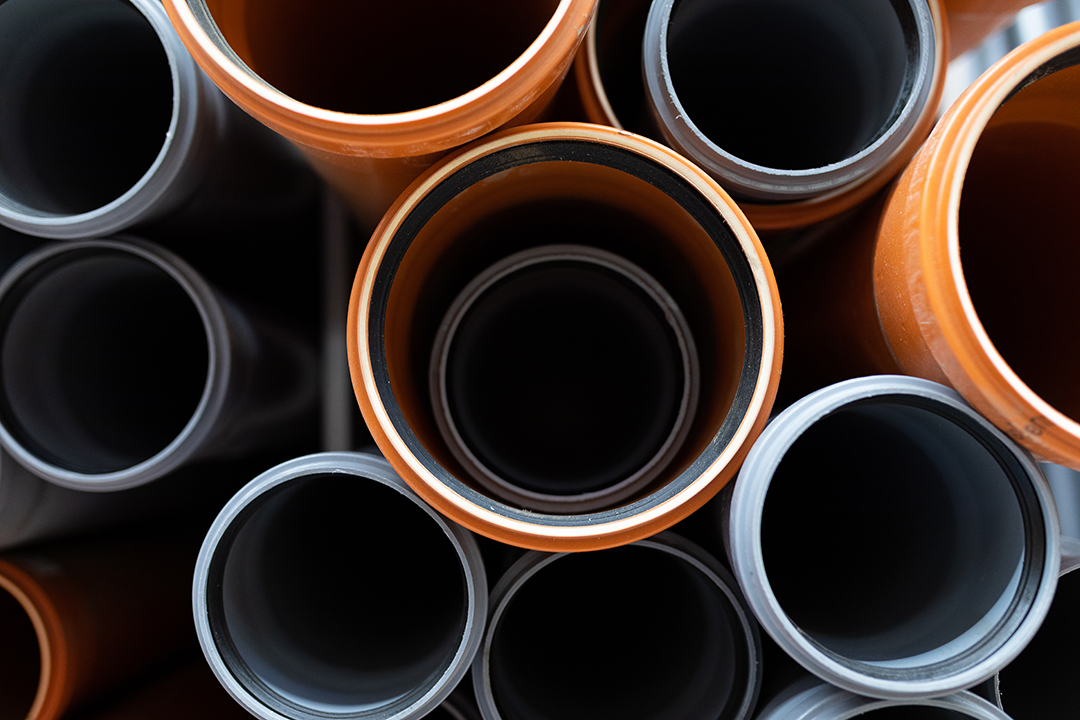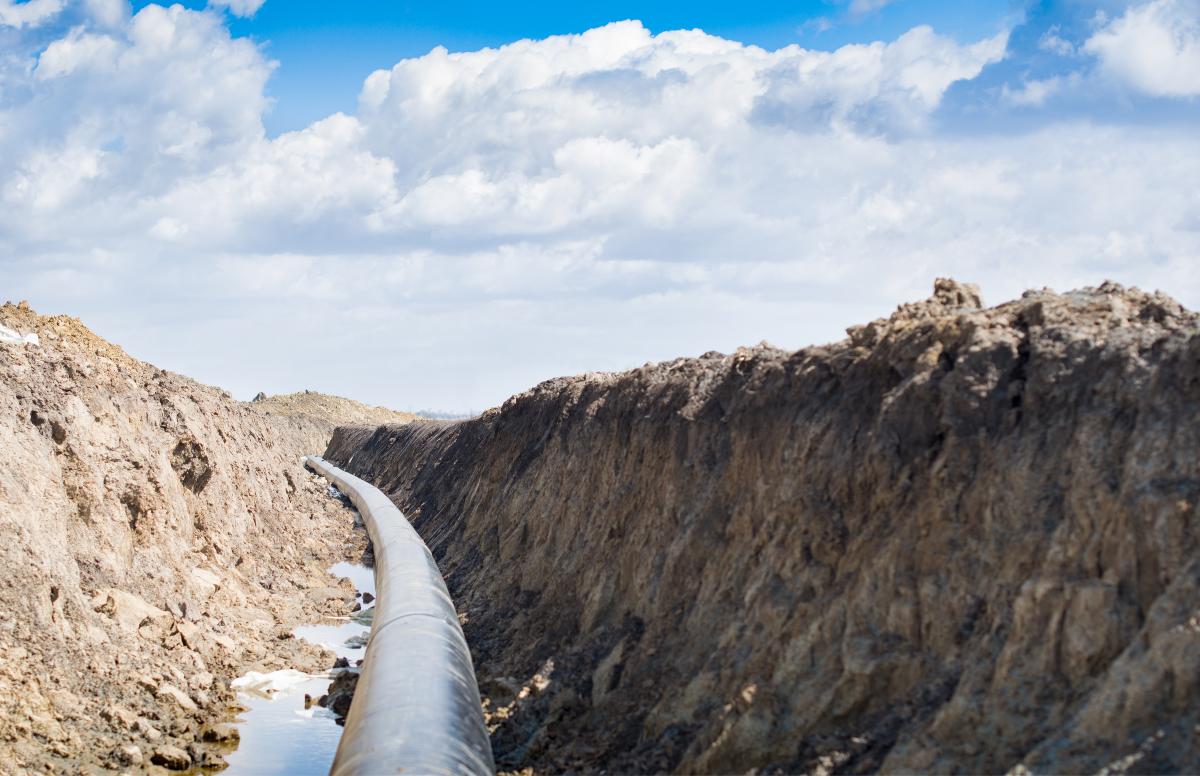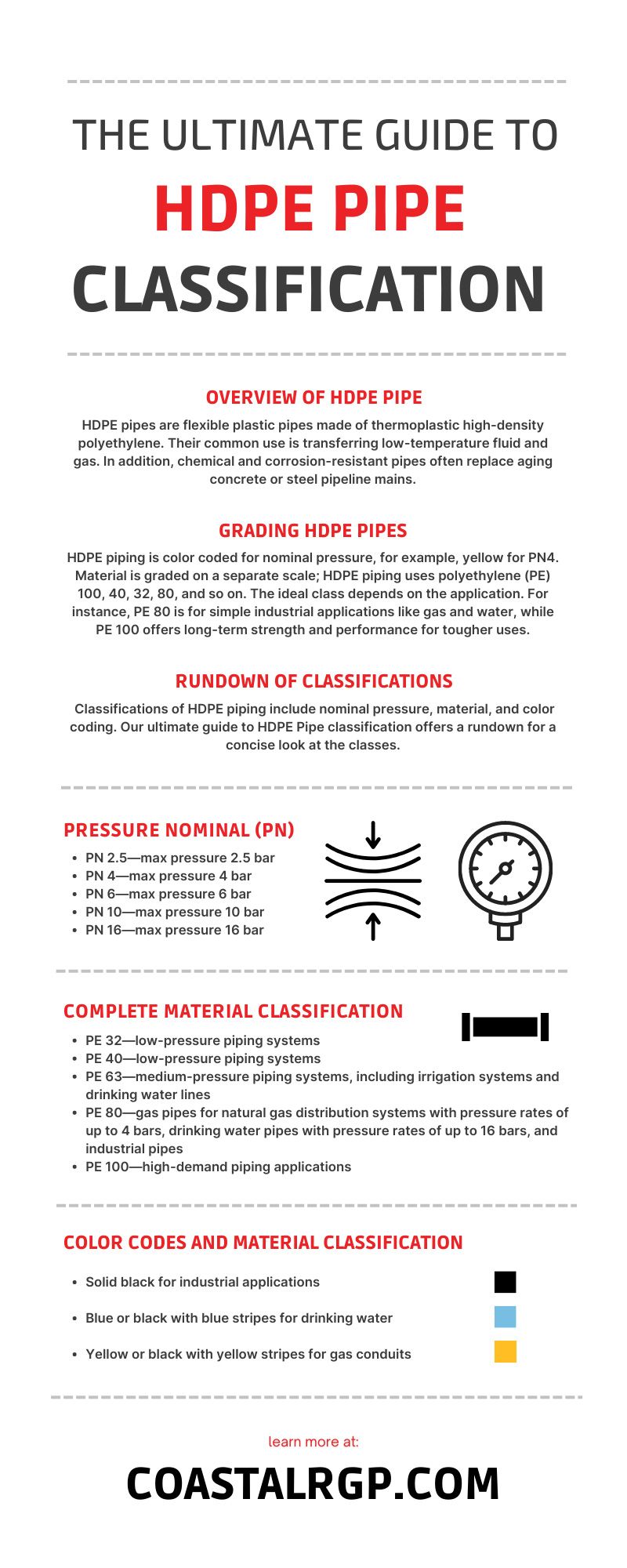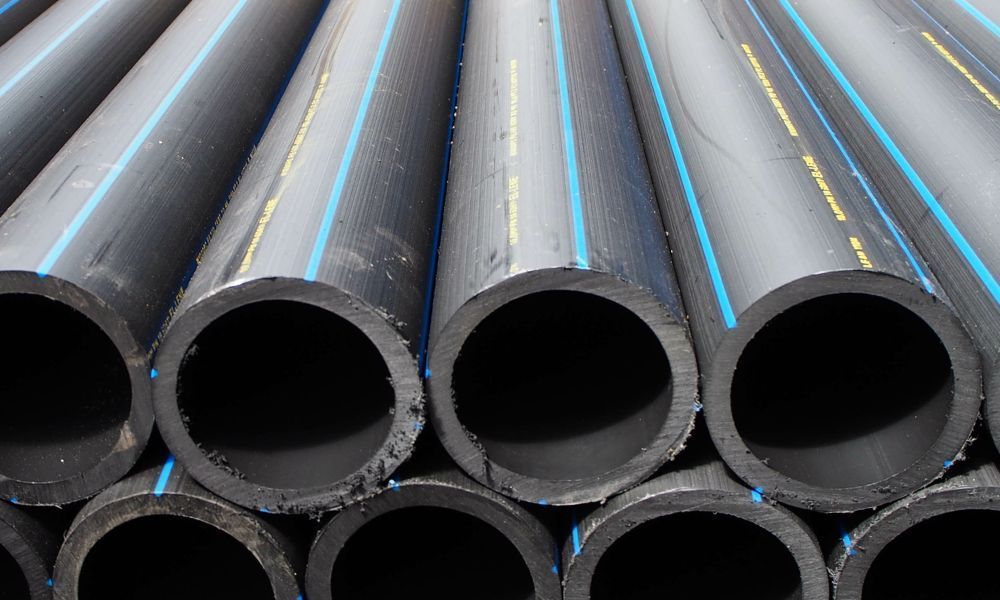Buying industrial products requires extensive product knowledge. This is especially relevant for piping in commercial, industrial, or residential applications. High-density polyethylene (HDPE) pipes are industry-leading materials for various applications. Ensure you select the right pipes by reading our ultimate guide to HDPE Pipe classification.
Overview of HDPE Pipe
What is HDPE pipes? HDPE pipes are flexible plastic pipes made of thermoplastic high-density polyethylene. Their common use is transferring low-temperature fluid and gas. In addition, chemical and corrosion-resistant pipes often replace aging concrete or steel pipeline mains.
High-density polyethylene is a synthetic polymer that comes from petroleum. The pipe’s molecular bond makes it suitable for high-pressure pipelines. Modern uses include carrying hazardous waste, stormwater, and various gases.
HDPE pipes are heavy-duty, durable, and flexible, making them an ideal choice for several applications. Industries use the pipes because they’re also corrosion and chemical resistant, which makes them suitable for harsh environments.
Grading HDPE Pipes
HDPE piping has various classifications, and each design has specific applications. HDPE pipes align with European standards and are classified based on the pressure-holding capacity, ranging from nominal pressure PN class to PN 20.
HDPE piping is color coded for nominal pressure, for example, yellow for PN4. Material is graded on a separate scale; HDPE piping uses polyethylene (PE) 100, 40, 32, 80, and so on. The ideal class depends on the application. For instance, PE 80 is for simple industrial applications like gas and water, while PE 100 offers long-term strength and performance for tougher uses.
For a concise look at applications, below are some of the most common types of HDPE piping and their applications.
- Piping systems use PE 32 or PE 40 for low-pressure applications.
- PE 63 grade HDPE pipe is ideal for medium-pressure requirements.
- PE 80 has a material resistant to cracks, so it’s suitable in applications prone to cracking, like sewage systems and water distribution lines.
- PE 100 is also resistant to cracks, and 100 N/mm2 is the minimum required strength.
Rundown of Classifications
As mentioned, classifications of HDPE piping include nominal pressure, material, and color coding. Our ultimate guide to HDPE Pipe classification offers a rundown for a concise look at the classes.
Pressure Nominal (PN)
Manufacturers produce pipes with different pressure grades (PN grades). This shows the pressure in bars the pipe can support with water at 68 degrees Fahrenheit.
The pressure grades follow European standards, and they are:
- PN 2.5—max pressure 2.5 bar
- PN 4—max pressure 4 bar
- PN 6—max pressure 6 bar
- PN 10—max pressure 10 bar
- PN 16—max pressure 16 bar
Color Codes and Pressure Grades
The color codes that indicate the pressure grade are yellow for PN4, red for PN6, blue for PN10, and green for PN16. The distinctions help industries select the right piping for their applications.
Complete Material Classification
Polyethylene pipes require material classification too. Here’s the complete list:
- PE 32—low-pressure piping systems
- PE 40—low-pressure piping systems
- PE 63—medium-pressure piping systems, including irrigation systems and drinking water lines
- PE 80—gas pipes for natural gas distribution systems with pressure rates of up to 4 bars, drinking water pipes with pressure rates of up to 16 bars, and industrial pipes
- PE 100/PE 4710—high-demand piping applications that require long-term strength, chemical resistance, and high-pressure tolerance. Learn more about our HDPE PE 4710 offerings and how they meet these rigorous standards
Color Codes and Material Classification
Check out the typical color classifications for pipes. Keep in mind that colors can vary depending on the country.
- Solid black for industrial applications
- Blue or black with blue stripes for drinking water
- Yellow or black with yellow stripes for gas conduits
Sizes of HDPE Pipes
 HDPE pipe sizes range from small diameters for residential use to large diameters for industrial and municipal applications.
HDPE pipe sizes range from small diameters for residential use to large diameters for industrial and municipal applications.HDPE piping comes in various sizes, varying from 20 mm to 1,200 mm in diameter. Manufacturers determine the size of the pipe by its internal diameter and measure them in millimeters.
When choosing the proper size of HDPE pipe, consider the volume of fluid you need to transport, the expected pressure the fluid encounters, and the length of the pipeline. The complete list of sizes is extensive. However, pipe suppliers offer sizing guides with additional information like wall thickness and mass.
Quality Control
Quality control follows ISO standards regulating the material design and minimum required strength (MRS) of pipes. Generally, quality assurance tests inform the manufacturers if the HDPE pipes can offer 50-plus years of service under normal operating conditions. In a way, quality control has classifications too!
Uses of HDPE Pipes
 Industries consider several factors, including nominal pressure, material composition, and additional components, when selecting pipes for various applications.
Industries consider several factors, including nominal pressure, material composition, and additional components, when selecting pipes for various applications.HDPE piping is great for a wide range of applications. Industries consider nominal pressure, material, and other components when determining which pipes to use. Today, you’ll see high-density polyethylene pipes in water supply, gas distribution, agriculture, and much more.
Industries use PN 10 grade HDPE pipe for water supply and distribution networks. You’ll typically see it in multistory apartment complexes. HDPE is ideal for natural and propane gas in the gas distribution industry. It’s worth noting that gas requires high tolerance to pressure, making PN-16 to PN-2 grade pipes suitable for operations. The agriculture industry utilizes HDPE pipes for irrigation and drainage.
In addition, HDPE is relevant for sewerage, mining, and the telecom industry. Thanks to piping, cities can manage sewage and stormwater to prevent flooding. HDPE pipes can handle volatile environments because they are resistant to chemicals and corrosion.
Mining companies use pipes for slurry transport and dewatering. Lastly, HDPE piping can protect cables in the telecom industry. This is beneficial for underground cables. The best part is that businesses can use general PN class pipes for this application.
Why Choose HDPE Pipes
Industries choose HDPE piping over traditional pipes because they offer more advantages. More than ever, HDPE is replacing materials such as concrete, steel, or PVC. For starters, HDPE pipes are exceptionally durable and can last a long time with minimal maintenance. They’re also resistant to corrosion, chemicals, and UV rays.
HDPE pipes are also cost-effective compared to other piping materials. They’re less prone to damage, which cuts repair costs!
HDPE pipes are lighter than traditional pipes for better handling and transport. In addition, the pipes are flexible, which is ideal in areas with a high risk of soil shifting. The flexibility makes them easier to install than heavy, rigid pipes.
Speaking of easy installation, you can join HDPE piping with heat fusion. The quick installation doesn’t require special tools or equipment.
Wrap Up
HDPE piping is a versatile and durable choice for various purposes. As mentioned, they offer several advantages over traditional pipes, including their low cost, durability, flexibility, and easy installation.
Whether you need pipes for water and sewage systems, natural gas networks, or crop irrigation, HDPE pipes are the best option. That’s why we’re proud to carry HDPE piping here at Coastal Resource Group! We offer top-quality piping for all your industrial needs, We offer top-quality piping for all your industrial needs, including various types of HDPE pipes designed to meet specific application requirements. Reach out to us today!



